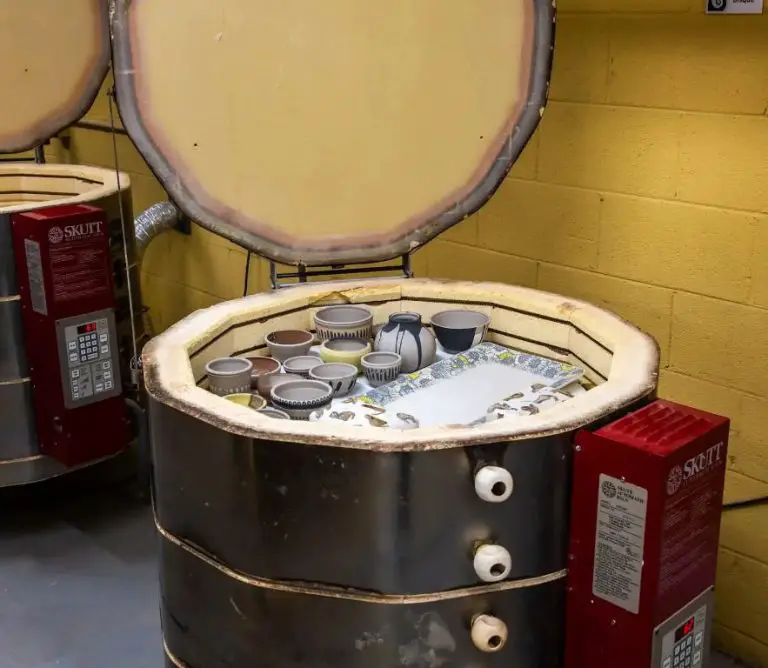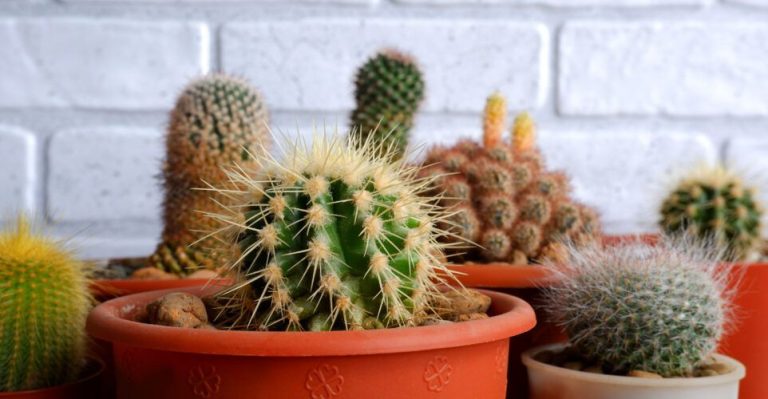What Gives Clay Elasticity?
Clay elasticity refers to the ability for clay to be shaped and molded without cracking or permanently deforming. Elastic clays stretch and bend when a force is applied, but return to their original shape when the force is removed. This plasticity makes clay an ideal medium for sculpting, throwing pottery on a wheel, and creating a variety of ceramic objects. Clay’s elastic qualities come from its unique composition and molecular structure, which allows the absorption of water in between clay particles. The right balance of mineral particles, water, and other factors enables clay to be supple and elastic without becoming too brittle or sticky. Clay elasticity is crucial for ceramic arts and crafts, as it allows artisans to shape, stretch, and sculpt clay freely without worrying about permanent deformation. Understanding what gives clay its elasticity provides insight into working with and taking advantage of this unique property of clay.
Clay Composition
Clay is composed of several key components that contribute to its elastic properties. The main components are silica, alumina, and water.
Silica refers to silicon dioxide, which forms the backbone of clay’s crystalline structure. It provides strength and hardness to clay. Alumina is aluminum oxide, which is present in clay as aluminum hydroxide. Alumina is able to absorb and retain water, contributing to plasticity.
The relative abundance of silica versus alumina affects clay’s elasticity. Clays high in alumina tend to be more elastic, as the alumina readily absorbs water molecules into its structure. Clays high in silica have less elasticity, as the silica does not absorb water as readily.
Water is the third critical component. The interaction between water and the clay particles allows the clay to be molded and stretched. Water essentially lubricates the particles so they can slide over one another when force is applied.
The composition of clay provides the foundation for its elastic properties. By understanding the roles of silica, alumina, and water, we gain insight into what gives clay its unique plasticity and elasticity.
Plasticity from Water
Water plays a key role in providing elasticity to clay. This plasticity comes from hydrogen bonding between water molecules and the surface of clay particles. When clay is wet, water molecules attach to the edges and surfaces of clay platelets via hydrogen bonding. This allows the clay particles to slide past each other while still maintaining cohesion within the clay.
The more water that is present in the clay, the greater the plasticity and elasticity. With sufficient water, the clay platelets can slide farther past each other before the hydrogen bonds are forced to detach. This provides the clay with enhanced elastic deformation capabilities. Simply put, a wetter clay can stretch farther without rupturing compared to a drier clay.
Particle Size
Clay’s unique elastic properties stem from its small particle size. Clay particles are generally less than 2 micrometers in diameter, with some clay types having average diameters around 0.2 micrometers. This incredibly tiny particle size gives clay an exceptionally high specific surface area.
As particle size decreases, the total surface area per unit mass increases exponentially. With clay’s small particle size, the total surface area of the clay particles is massive compared to the particle’s volume. This extensive surface area allows significant interaction between the clay particles and water molecules.
Water is absorbed onto the surface of clay particles and can move in between particles. The more surface area available, the more water clay can hold. Smaller clay particles have more surface area, and thus have the potential to absorb and interact with more water molecules. This water is what imparts plasticity and elasticity to clay.
Exchangeable Cations
Certain cations, or positively charged ions, such as sodium (Na+) and calcium (Ca2+), play an important role in facilitating water absorption in clay. These cations, referred to as exchangeable cations, sit between the stacked layers of clay platelets. When water is introduced, it is attracted to these cations and can displace them from the clay structure. The more cations present in the clay, the more water can be absorbed, allowing the clay layers to slide past each other more easily.
As the clay absorbs water, the cations are solubilized into the water. This creates a store of available cations that makes the clay plastic and malleable. The higher the cation exchange capacity of a clay, the more cations it contains and the more elasticity it will exhibit when mixed with water. Clays like bentonite have a very high cation exchange capacity, which gives them exceptional plasticity and allows them to be molded and shaped.
Organic Matter
Organic compounds like humic acids can also impact clay elasticity. These organic materials can coat the surfaces of clay particles, creating a barrier between the particles. This prevents the particles from packing closely together, allowing more space between them. With more space between particles, the clay can deform more easily under pressure without the particles coming into direct contact with each other. The organic coating essentially lubricates the clay, increasing its ability to bend and flex elastically.
Higher levels of organic matter like humic substances in clay result in more particle coatings, which enables greater elastic deformations. The organic compounds prevent the clay particles from bonding tightly, preserving the clay’s ability to return to its original shape after the pressure is released. So organic matter promotes elastic behavior in clay.
Clay Modifications
Various processes can be used to modify the elasticity of clay. The most common methods are heating, freezing, and adding chemical additives.
Heating clay to high temperatures causes chemical changes that decrease elasticity. As clay is fired, the clay particles bond together more tightly, forming glassy phases that reduce the clay’s ability to bend and deform without breaking. The higher the firing temperature, the less elastic the clay becomes.
Freezing clay can also affect its elasticity. As water freezes and ice crystals form, they can rupture rigid clay particles and introduce microscopic cracks and pores into the clay body. This physical change makes the clay more porous and elastic after thawing.
Chemical additives are frequently mixed into clay to modify its properties. Plasticizers such as sodium silicate are added to increase elasticity and flexibility. Flocculants like sodium polyacrylate cause clay particles to clump together, reducing plasticity. Waxes and oils can coat clay particles, making the clay more lubricated and elastic. The type and amount of chemical additives determines the resulting elasticity.
Measuring Elasticity
There are standard tests used in the ceramics industry to measure the elasticity of clay. The most common methods are thread counting and the drop ball test.
Thread counting involves taking a lump of clay and rolling it into a cylinder roughly 1/4 inch thick. This cylinder is then gradually stretched apart until it reaches its breaking point. The length the cylinder stretched to before breaking is measured and counted in terms of inches. A higher thread count indicates more elastic clay.
The drop ball test involves forming clay into a patty and letting a steel ball drop onto it from a fixed height. The depth and diameter of the indentation made by the ball is measured and indicates the clay’s elasticity. A deeper, narrower indentation correlates with higher elasticity.
These standardized tests allow potters and ceramicists to numerically compare the elasticity between different clay bodies. The results inform them about the clay’s suitability for certain shaping and molding techniques that require more or less elasticity.
Elasticity in Practice
The optimal elasticity of clay depends on the intended purpose. For pottery, some elasticity is desired to prevent cracking and breakage during shaping and firing. However, excess elasticity can cause issues like slumping or deformation. The clay needs to hold its shape while being flexible enough to withstand stresses.
For sculpting, maximum elasticity is usually preferred. Highly elastic clay is easier to bend, twist, and sculpt into intricate shapes without cracking. It also allows continually reworking an area without the clay drying out or losing plasticity.
There are several ways to troubleshoot elasticity that is too high or too low:
- If clay is too elastic, let it dry out slightly or blend in grog or chamotte to absorb moisture.
- If clay lacks elasticity, wedge it vigorously to realign particles or blend in a small amount of bentonite clay to increase plasticity.
- Avoid overworking clay as this can decrease elasticity over time.
- Store unused clay in airtight containers to maintain consistent elasticity between uses.
With testing and experience, ceramic artists learn to adjust clay bodies and preparation methods to achieve the ideal elasticity for their creations.
Conclusion
Clay’s elasticity is influenced by several key factors including its water content, particle size distribution, exchangeable cations, and organic matter content. By controlling these factors, potters, sculptors, and architects can fine-tune the elasticity of the clay bodies they work with. Achieving the right level of elasticity is crucial for many applications to avoid cracking and enable the shaping and forming required.
For pottery and sculpture, more elastic clays are often desirable to allow deformation without fracture during throwing, sculpting, attaching handles and spouts, and smoothing surfaces. In contrast, for making construction materials like bricks and tiles, minimal elasticity is preferred so the shaped clay maintains its form without sagging when dried and fired. With testing and experience, ceramic artists and manufacturers learn to adjust clay composition and preparation to produce customized elasticity characteristics.
Understanding what gives clay its elasticity empowers artists and builders to select and formulate the optimal clay bodies for their creations. Controlling elasticity allows achieving both the plasticity required for shaping workable objects, and the strength needed for fired pieces to maintain their forms over time.


